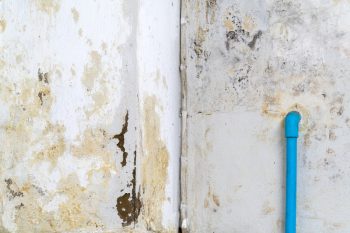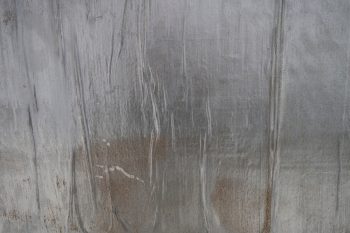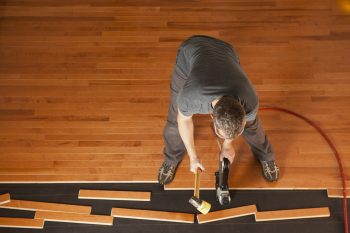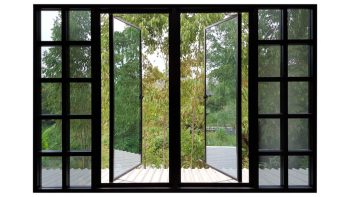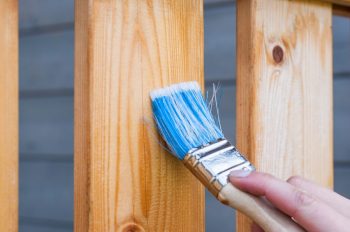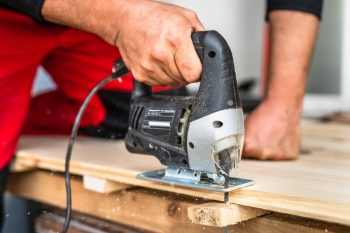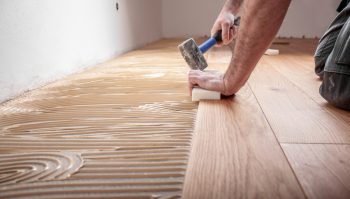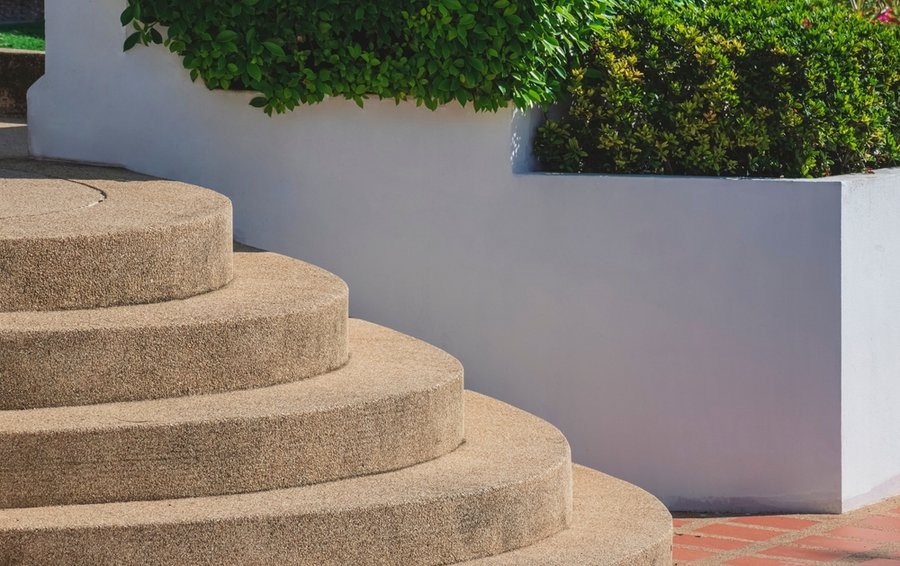
Exposed aggregate concrete is a superb choice for paving or other decorative purposes, but making it smooth is possible without professional help.
To make exposed aggregate concrete smooth:
- Use a broom and a mix of floor cleaner with warm water to remove debris.
- Level the rough patches with a hammer and chisel.
- Apply epoxy resin to the cracks in the concrete and cure it.
- Grind the surface with a 120-grit metal and remove dust.
- Polish with an 800-grit resin and seal with an epoxy sealant.
We know aggregate concrete has cracks and irregular bumps, which can become a walking hazard. So, we’ve compiled a comprehensive guide for you to make exposed aggregate concrete smooth.
Easy Ways To Make Exposed Aggregate Concrete Smooth
When you remove the top layer of concrete, the fine finish that is exposed in the form of whole or polished stones is what we call exposed aggregate concrete.
Aggregate concrete comes in different shapes, and some of its popular types have pebbles, basalt, gravel, crushed glass, quartzite, or other exposed stones.
Apart from seeded aggregate concrete, other types need to be smoothed out using simple techniques to reveal the stone’s assortment.
1. Concrete Grinding

Unlike pure stone or tile, aggregate concrete has somewhat rough edges and uneven surfaces. Such areas of the floor are made smooth with the help of concrete grinding.
Although the grinder is an abrasive tool and should be dealt with precaution, it can actually increase the lifespan of aggregate concrete.
Silica dust can irritate or damage your lungs/eyes, so using proper eye protection with a mask is a must for grinding concrete.
To start, broom the aggregate concrete to remove debris. Next, add a few drops of a neutral floor cleaner to warm water and mop the area with it to remove any dust further.
If you notice any uneven surfaces or cracks, use a hammer and chisel to level them. You can apply epoxy resin to the side of damaged regions to help keep them together and limit any damage.
For concrete cracks, use epoxy glue until they are leveled off to the rest of the surface. Let the epoxy cure for about 24 hours.
Now, use an 8-inch grinder with a cup wheel or a sanding disc pad for grinding exposed aggregate concrete.
Let the epoxy dry slowly because the resin can turn yellow if it is cured too fast than its recommended time.
Lightly go over the surface and grind down the top layer (1/16 inch) with 120-grit metal to give the concrete a glossy smooth finish.
However, don’t let the grinder sit in one place for too long, or you can risk digging the floor in a single spot.
Remove the dust with a broom and wipe it with a damp mop. Once the first grinding is done, change the grinding pads with 800-grit polishing pads, re-do the above process, apply an epoxy sealant with a roller brush as a protective overcoat and let it dry.
Solvent-based concrete sealers have harmful fumes and vapors, so wear personal protective equipment when sealing the floor, especially for the eyes and skin.
If you have an old exposed aggregate concrete, chances are its grinding is already done, so skip that step and hop on to polishing it with the grinding machine for a smooth floor.
2. Diamond Polishing
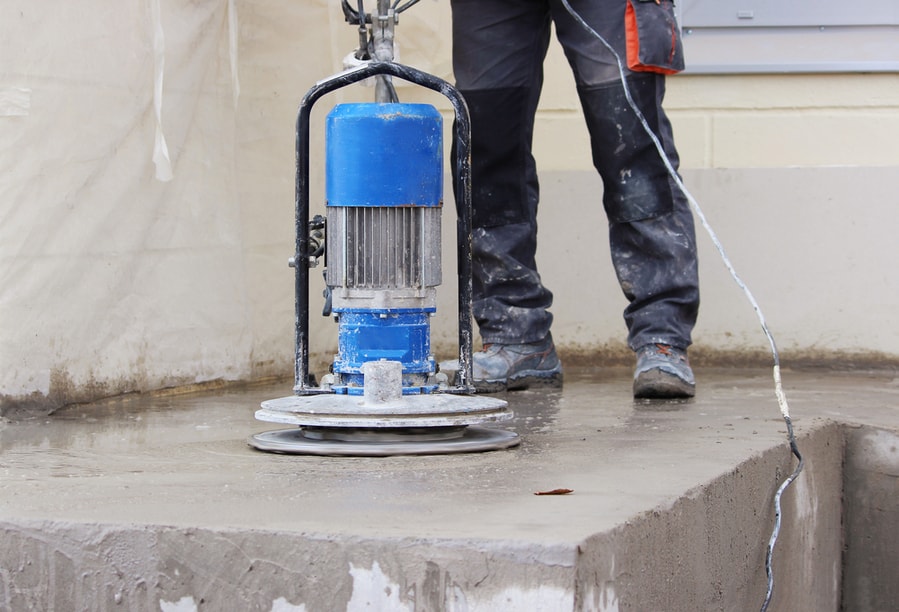
Most public spaces that use exposed aggregate concrete have diamond polish done for a smooth finish. Diamond polishing uses diamond grit and gives different levels of sheen depending on the grit level.
You can use both mechanical polishing and chemical polishing for finishing aggregate concrete. However, the mechanical one is cost-effective, sustainable, and toxin-free with the least amount of work.
To start the process, wipe the concrete with a damp mop to remove any debris or dirt and let it dry.
First, remove the existing coating of the concrete using a 16-grit or 20-grit diamond abrasive depending on its thickness. Next, use an aggressive tool designed for surface grinding like T-Rex for optimum results.
Do not wear dangling jewelry or loose clothing, and tie your hair when using a surface grinder, as it may get caught in the machine.
Fill the cracks with any semi-rigid filler and grind with a 30-grit or 40-grit metal-bonded diamond abrasive. Once the concrete looks even, switch to 80-grit metal-bonded diamond and for an even finer finish, use 150-grit abrasive.
Clean the dust, spray a concrete densifier on the surface and use a dry mop to spread it all around. Re-apply if you feel any area is drying out faster than the rest, and keep the overall surface wet for 30 minutes.
You can pick among potassium, lithium, sodium, or colloidal silicates to use as a concrete densifier.
Start the polish with a 100-grit or 200-grit resin-bond diamond. Next, use a 400-grit resin-bond diamond over the whole and switch to 800-grit.
For extra smooth exposed aggregate concrete, use 1500-grit or 3000-grit resin-bonded diamond based on the level of sheen and polish you want to achieve. Clean the concrete with a broom after using the final grit to polish it.
Apply a concrete stain guard after polishing to improve its stain resistance and color retention.
Takeaway
In this article, we’ve discussed sustainable methods to smooth the exposed aggregate concrete using grinding and polishing techniques.
We hope you can now splurge on that landscaping idea you were holding off on because the aggregate concrete looks finer than ever with a better finish.
Frequently Asked Questions
Should I Make Exposed Aggregate Concrete in the Garage Smooth?
No, you should avoid giving a smooth finish to garage aggregate concrete because it is not durable, especially in cold temperatures.
In addition, water or snow on your shoes or car tires can present a slipping hazard if the concrete is smooth.
Does Sealing Exposed Aggregate Make It Slippery?
Yes, sealing exposed aggregate gives a glossy finish but makes the concrete slippery. However, sealing is a crucial step to increase the longevity of the exposed aggregate.
How Do You Get Exposed Aggregate Shiny?
You can use topical sealers like acrylic resin that are applied dry and give the exposed aggregate a shiny gloss.
Also, such sealers are a good choice for weather and stain protection.
